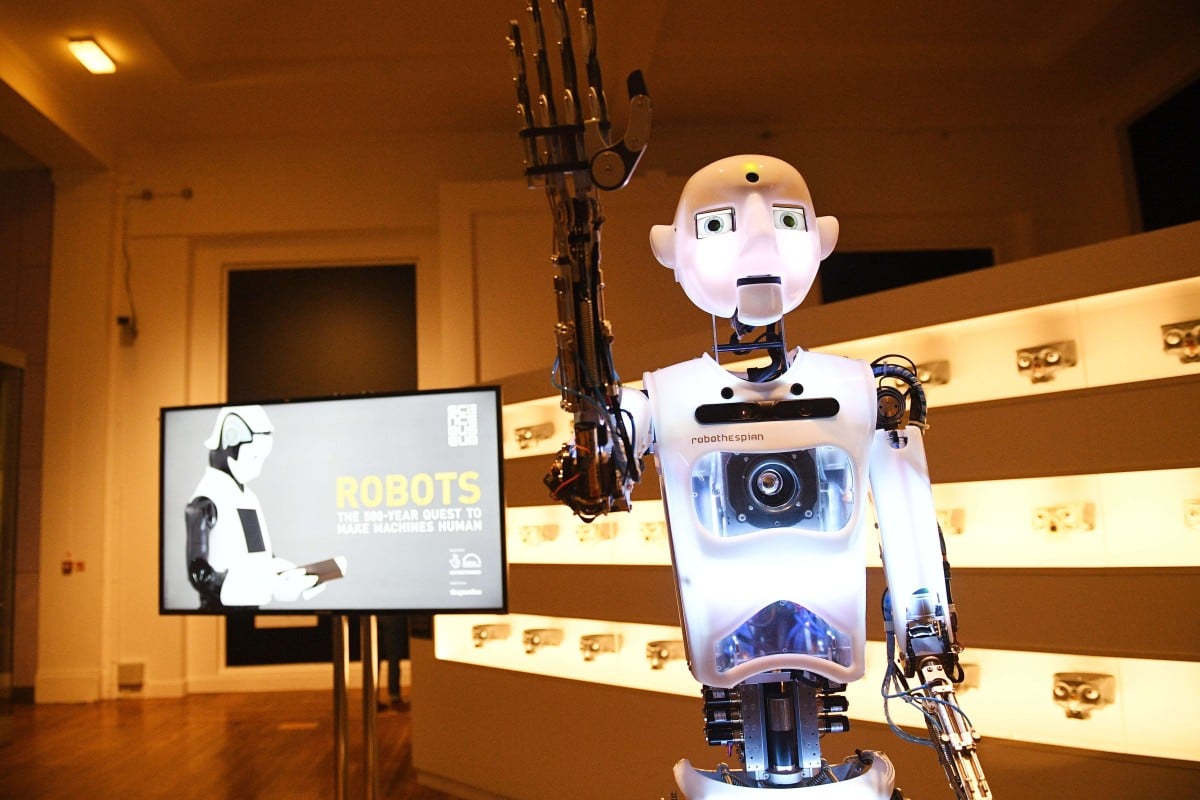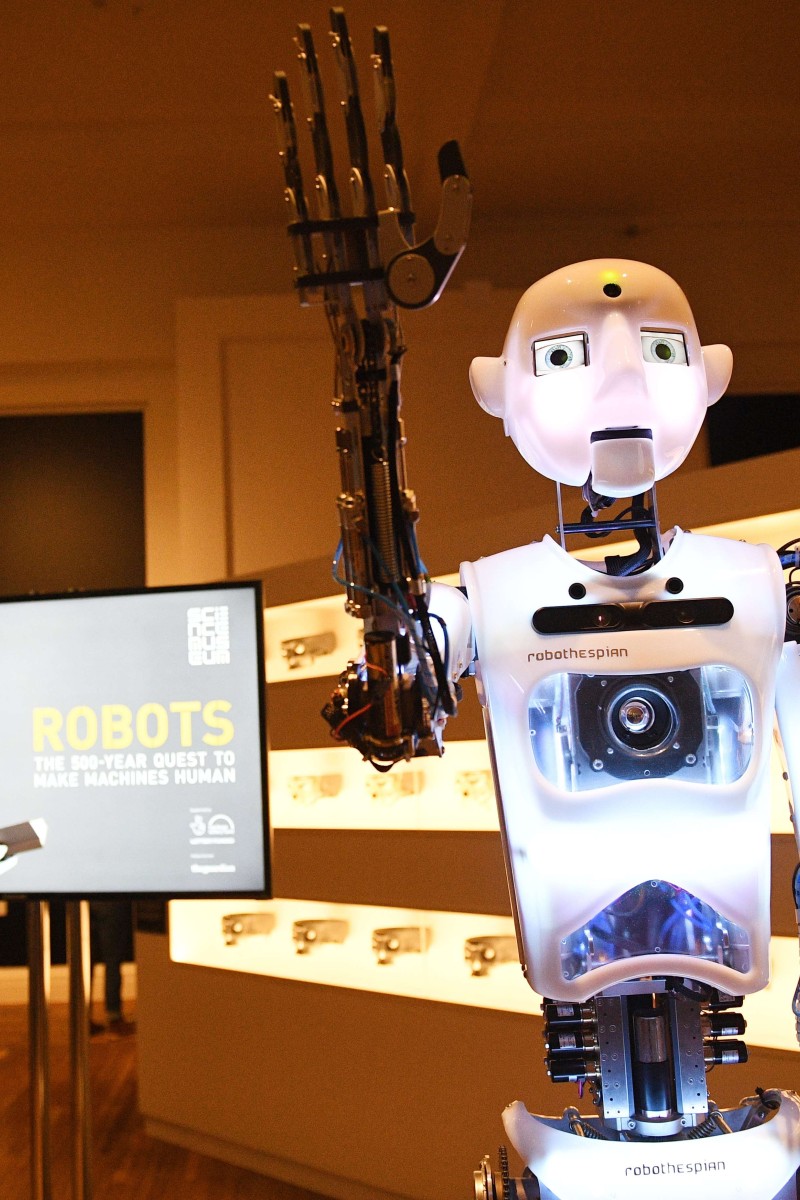 Robothespian, a social robot, can interact with you.
Robothespian, a social robot, can interact with you. Why do humans build machines that resemble them – and what does that say about us? A London exhibition is surveying 500 years of simple to sophisticated robots to find out.
Take a lip-syncing monk from the 16th century or a cartoon-like humanoid avatar that helps children with autism today. They and 100 other robots on display at the Science Museum chart an evolution of machines that fascinate and terrify in equal measure.
“One of the big issues with doing a show like this is people’s preconceptions that robots come in, they destroy the world and they enslave us all,” lead curator Ben Russell said.
“One of the advantages of taking a long view of robots as we have done, is that you realise a lot of these concerns have been with us for a very, very long time,” he added.
But he dismissed these fears as overblown and said humans would prove “much more adaptive”.
Studying robots is a good way to learn what society was like at any given point, the exhibition argues.
A 16th-century articulated manikin – a little model of a man – allowed its owners to explain and explore the human body.
A monk statue built on behalf of King Philip II of Spain, also from the 16th century, was designed to impress. It is able to pray, walk across a table while moving his lips, and raise a crucifix.
And dating from 1773, a stunning Silver Swan moves with grace thanks to three separate clockwork mechanisms. The Silver Swan was designed and built by John Joseph Merlin, the inventor of roller skates. It featured at the Paris Exhibition of 1867 where it was seen by American author Mark Twain, who later described it in his novel The Innocents Abroad.
Science fiction has fed for more than a century on fears that humans might be overtaken by the machines they create, and the robotisation that is increasingly a part of everyday life still stirs up debate.
A report from the Reform think tank this week predicted 250,000 British public service jobs could be lost to robots over the next 15 years.
In France, a presidential candidate wants to create a “robot tax”.
Artificial intelligence (AI) has also divided the scientific community, with renowned physicist Stephen Hawking saying AI could be “either the best, or the worst thing, ever to happen to humanity”.
But Professor Giorgio Metta, vice scientific director at the Italian Institute of Technology, said:“I must say that we’re very, very far from anything like that.
“The applications we manage to develop now are very narrow, so artificial intelligence can solve very specific problems. There’s no way they can learn anything else, or autonomously switch from one task to another,” said Metta, who built the iCub toddler robot, also on display at the exhibition.
A replica of “Maria” from the film Metropolis and the original T-800 Endoskeleton robot used in the film Terminator Salvation are straight from the trove of dystopian fiction on the subject.
But many of the latest robots are all about entertaining, and even taking care of, humans. The British-built RoboThespian, a full-size humanoid robot will move around the exhibition, do vocal exercises and give a theatrical performance to visitors every 20 minutes.
Kaspar, with its mop of thick back hair and interactive features, is designed to engage with children with autism and help them learn about communication.
Its minimally expressive face is easier to interpret for autistic children than a human face is.
And its pre-programmed behaviour helps teach children about cause and effect. If hit, Kaspar makes a sad face, turns away and says “Ouch, that hurts.”
Zeno R25 is used in learning activities and therapy for children. One of the most expressive humanoid robots that can be bought off the shelf, it can replicate facial expressions of people it sees in front of him.
Finally Harry, Toyota’s first walking humanoid, can play the trumpet.
The exhibition runs until September 3.
